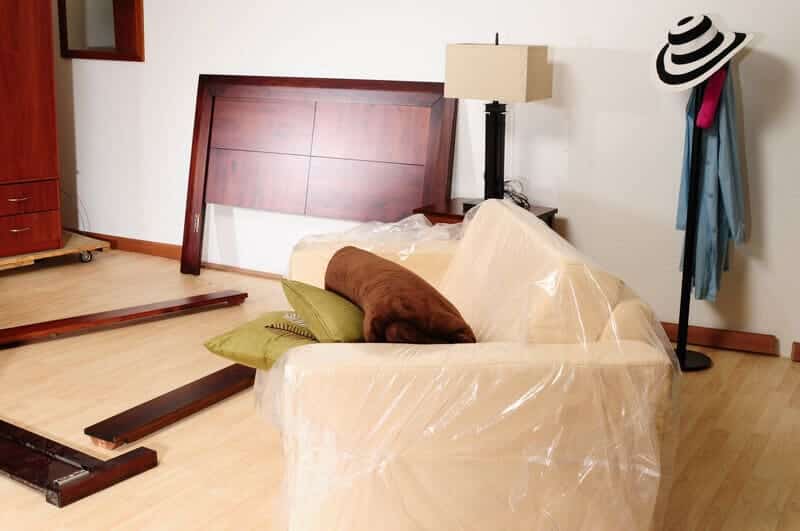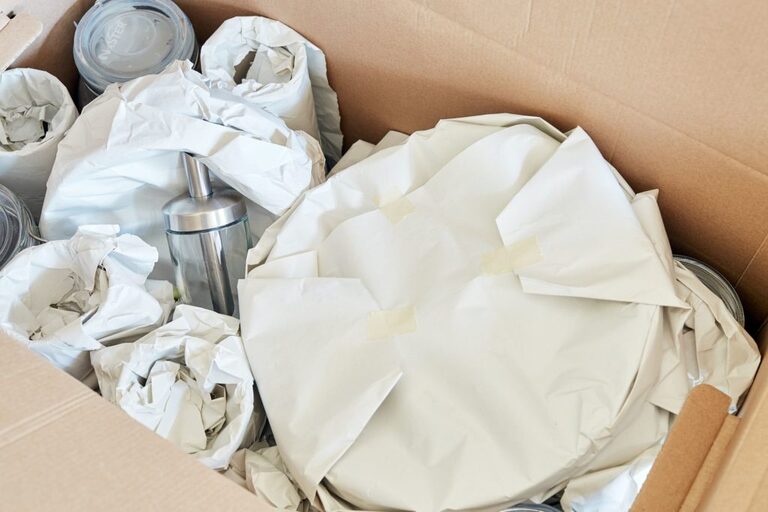Moving is one of the hardest things to do. Just think how you would feel if you broke or lost that beautiful set of glassware your grandmother gave you.
Oh, let me tell you! That could be hard to take.
Moving to a new house is thrilling, but it is exhausting too. However, whether you are moving only a few minutes away, or across the country, you’re going to have some items that require a few extra steps during packing to safely get to your new location.
When you arrive at your new home, you will want to unpack those fragile items right away. Trust me, packing glasses and cups is never easy! In this blog, we provide you with how to pack glasses for moving.

Sourcing quality packing material
You can’t move successfully without having the right equipment. In this instance, we are talking about packing glasses, so you certainly don’t want to skimp or be frugal when it comes to packing supplies. For how to pack glasses for moving, the most important ones you’ll need are:
- Packing paper—Packing paper is crucial to protect sensitive items and to avoid scratching glasses.
- Moving boxes—Of course, you will need strong good-sized moving boxes, because you need a collection of moving boxes anyway when you move. It is obvious, but too many times we see people disregard the importance of boxes and just throw their glasses in a bag. Moving boxes are a great way to keep your things isolated and provide extra protection for fragile items.
- Plain /Old Newspapers – Adding plain cardboard or old newspapers to the boxes is easy this is free! To give your glasses and plates more protection, use old newspapers.
- Cracked paper – Add another layer of cracked paper or an additional sheet of paper to your packing paper. If you put an extra sheet of paper for good measure, it can add an extra layer of protection.
- Packing peanuts – You can place packing peanuts in the empty spaces in your moving boxes, and they also provide a safety layer around the edges of your boxes.
- Bubble wrap –Make sure to have bubble wrap handy for all your packing needs during the moving box process, especially when it comes to packing those delicate glasses! Bubble wrap is a great way to protect things and also gives the really careful packers a little extra comfort.
- Packing tape/ Duck tape – Make sure you have lots of duct tape or packing tape available for many things. In addition, you will need packing tape to ensure the lids to your moving boxes stay on safely.
- Pens and markers – Toying with writing the right names on the boxes will save you a lot of time and trouble when it is time to unload. You will also want to add a roll of stickers to keep your moving boxes tidy.
How to Pack Glasses When Moving
Wrap Large, Heavy Glasses
The large glasses or heavy glasses should always be the first thing to be wrapped and packed. The lighter-weight cups should be placed on top, while the heavier ones should always go at the bottom of the box. Take your paper or towels and place your stack on a clean, flat surface. Take one glass or mug and align it with the edge/corner of the packing material, and place it there. Roll the glass or mug and insert the paper or towel into the opening. Cover the glass completely.
Fill the box
Pack the box with wrapped products, putting heavier glasses on the bottom of the box, and lighter glasses on top. If you’re using a box with dividers, your wrapped products should easily fit within the narrow sections. Add some packing material to create a snug fit, and reduce movement while transporting the box.
If you are not using boxes with dividers, properly arrange your wrapped glasses into rows. Add some additional packing paper or bubble wrap between the products to minimise the chance of breakage.
Stackable and Comparable Glasses
Arrange glasses, cups, and mugs together into “like” size groups for stacking. For small things, cut your packing paper and/or bubble wrap sheets in half (using scissors). If you have a lot, it saves paper to use two glasses inside one large sheet if using matching glasses.
If you have glasses that match in size, follow the guidelines listed above. As you wrap the first glass and finish half of your packing sheet, position the second glass beside it and proceed with the wrapping process. Place the ends of your packing sheet into the hole.
Box Up the First Layer
Once you are done wrapping your glass(es), fold over the ends at the base of the glass to make it a neat and tight package. You are ready to box if you can no longer feel the edges of the cup. It does not matter if the glass has a handle and/or a large lip, you might
Prepare the box
If wrapping with newspapers or wrapping paper, crumple up enough to fill the bottom of the box. The paper will act as a cushion that is soft enough to protect the glasses and will keep them from hitting the bottom of the box, and also going to cover the glasses if you happen to throw the box down.
If you’re using blankets, you want to make sure that the first layer of blanket is thick enough to protect the items from careless bumps.
Conclusion
In the above details, we give you proper information about how to pack glasses for moving. We hope that this information will help you move your fragile items easily.
FAQs
Q: What is the most efficient way to pack glasses for moving?
A: The most adequate technique concerns making a cushioning cocoon almost each glass using packing paper. Start by spreading out a sheet of packing paper sideways, then place the glass at one corner. Roll the glass in the paper, folding in the edges at the top and bottom.
Q: How to pack glasses for moving without paper?
A: If you don’t have a key to tissue paper, newspaper, or packing peanuts, you can even pack wine glasses securely using bubble wrap or towels. Wrap the glasses: Wrap each glass separately in bubble wrap or a towel
Q: Does bubble wrap protect glass?
A: For added security, you should also consider using traditional bubble wrap, folded bubble wrap or air pillows. The goal is to provide you have sufficient material to satisfactorily cushion the glass item on all sides so that it can’t move or come into contact with other objects during shipping.




